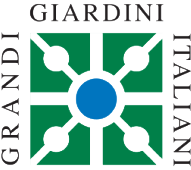Art in the Pojega Garden
Villa and Statues
The villa features a regular and geometric horseshoe layout that opens onto the garden through a sort of interior courtyard.

Villa Rizzardi, a historical 19th-century residence that was recently restored, is the ideal location for unforgettable weddings and ceremonies, with its large, well-distributed spaces suited to the personal choreography of your events.


Statues

Apollo, god of the Sun and music, depicted with a quiver over his shoulder and the python he killed at his feet.
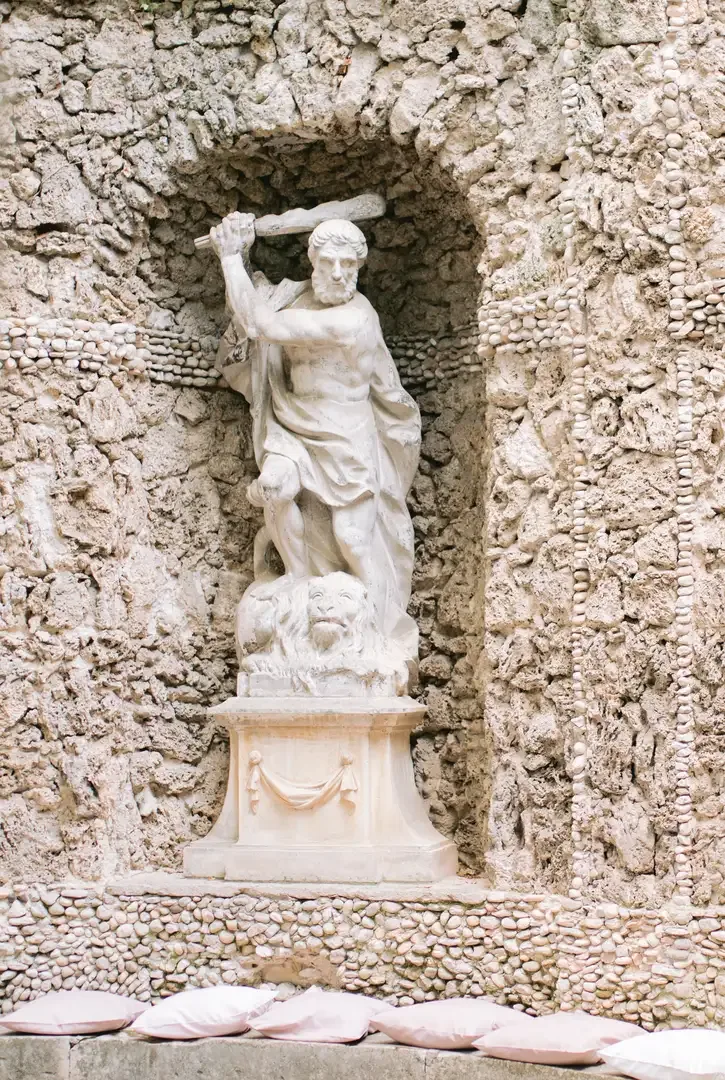
Hercules, a bearded man with muscular body, the hero par excellence, wielding his club over a lion subdued at his feet.

Venus, the goddess of love, depicted nude with two doves, a myrtle branch, and net over her shoulder.

Diana, the goddess of the hunt, with a waxing half moon on her head, accompanied by a dog and a sheep.

The Belvedere complex consists of a central stone stairway with statues on the two sides.
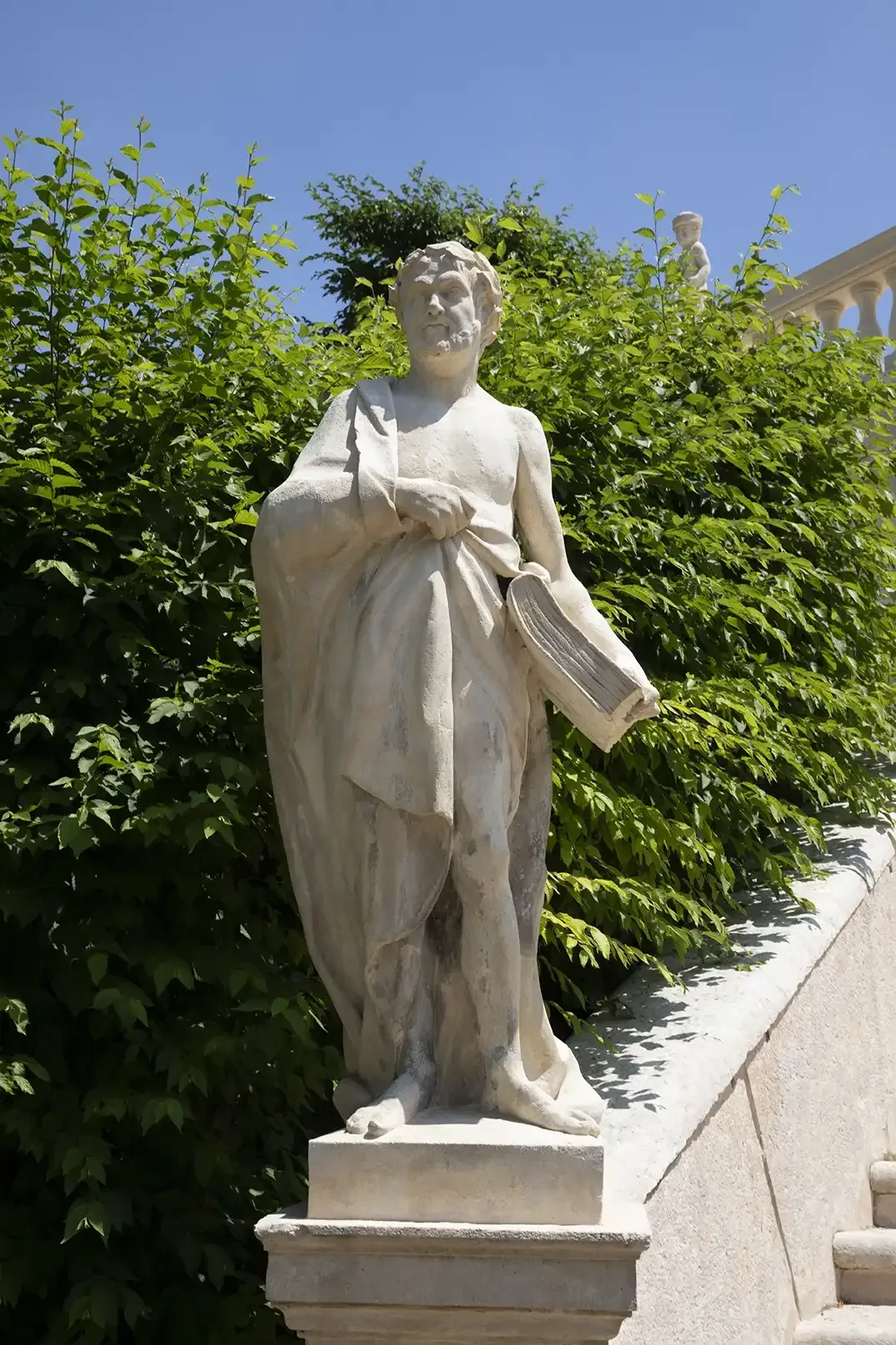
On the left, an adult man wearing a long tunic, with a book in the hand and crown of leaves on the head, represents the virtue of Knowledge.

On the right, a young man with a crown of sprigs on the head and holding a cornucopia probably personifies Abundance.

At the top of the stairs, a niche holds a noblewoman crowned with laurel, with a pomegranate and a bundle of arrows tied with a ribbon. This is Harmony.

Entering the theatre, we find the scenic space to the left. At the back, there is a large sculptural group probably depicting the two muses of theatre, Melpomene (tragedy) and Thalia (comedy).

At the centre, we find a statue depicting Jupiter, the king of the gods, a solemn, majestic figure with a crown on his head and accompanied by an eagle, symbolizing the highest reaches of the sky.
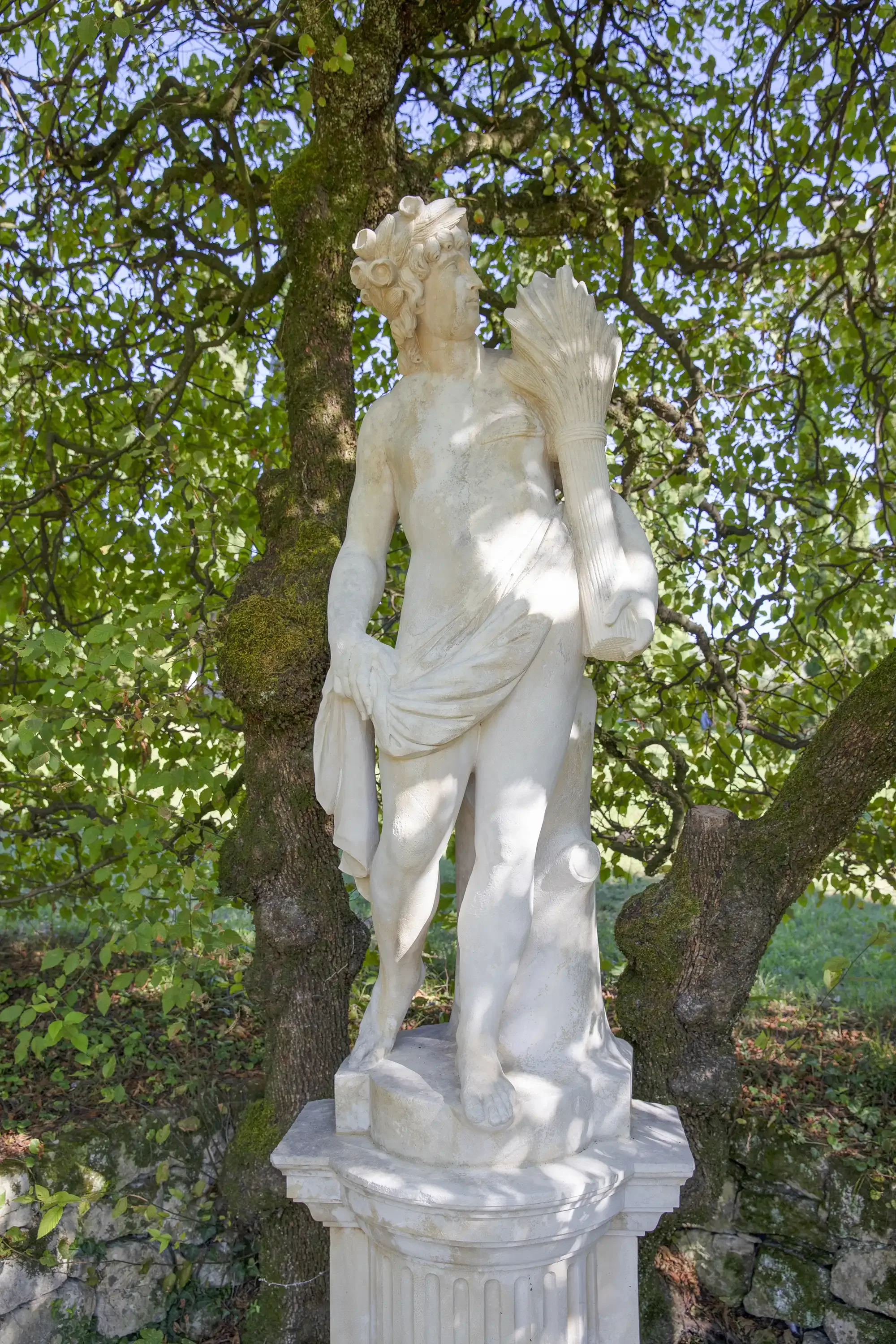
To the right of Jupiter, a statue depicts Ceres, the goddess of the land and agriculture, wearing a crown of flowers on her head and holding a sheaf of grain in her hand.
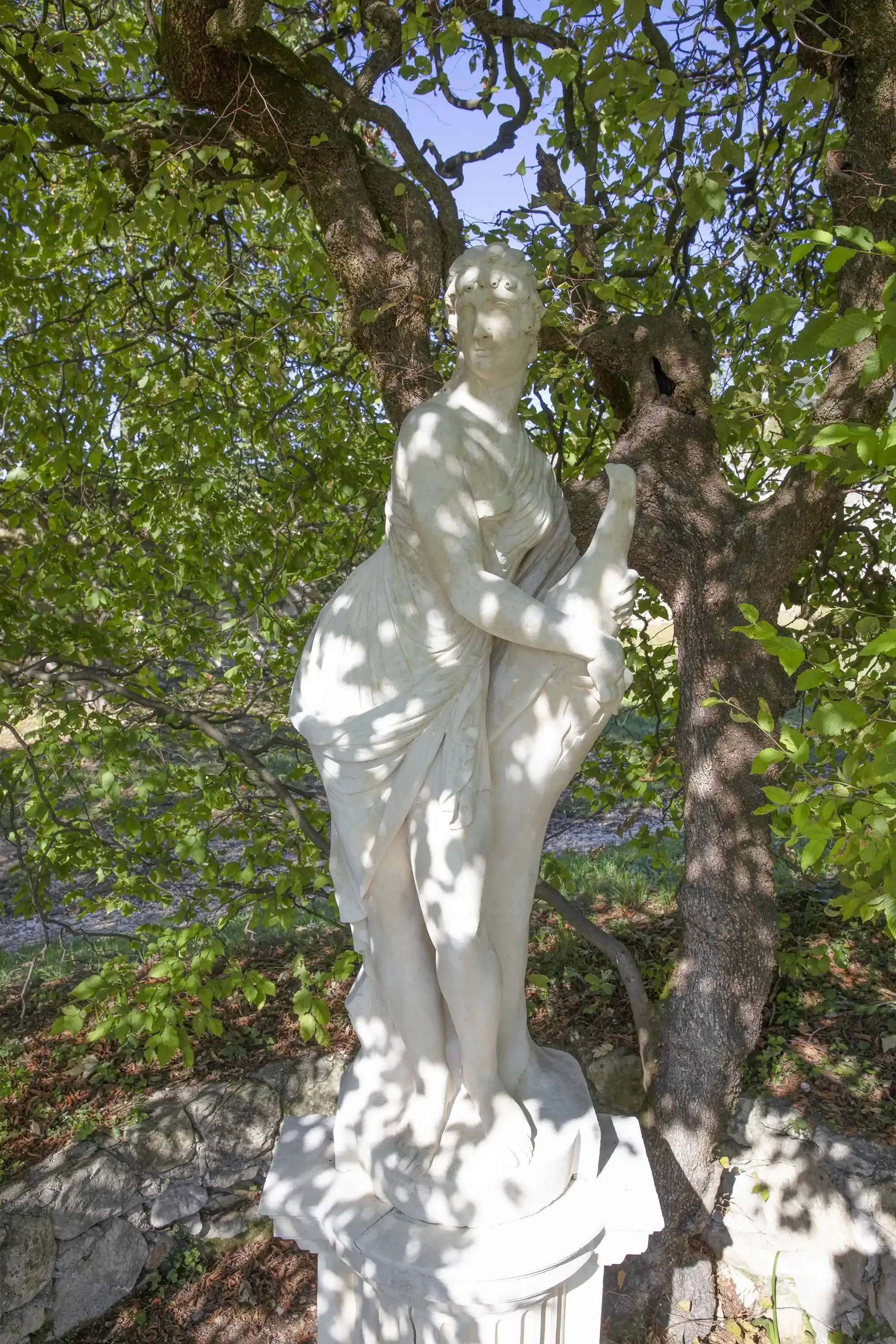
To the left of Jupiter, we find two playful putti, then a statue of his wife Juno, queen of the gods and a symbol of conjugal fidelity. She is depicted with a peacock, a sacred animal for her, whose tail studded with a thousand ‘eyes’ represented the starry sky.

The statue at the centre of the pond celebrates the element water: the girl at the centre is Water, surrounded by amphorae, dolphins, and Tritons.

Neptune, the god of the sea, takes the shape of an impressive, mature man, with beard and flowing hair, crowned head, and accompanied by a dolphin.

This composition represents Water, personified by a young woman seated on a rock and holding an amphora that spouts water. The dolphin below symbolizes the sea, while the putti mean that water is the principle of everything and the source of life. Kneeling at the woman’s feet, two Tritons pay homage to the most important of the elements.

The pond is surrounded by ‘walls’ of bay tree which form galleries, niches, and an exedra containing another statue. This one, which does not seem to relate directly to the context, depicts a woman dressed in an elegant draped tunic, with a crown of laurel on her head and an open book in her hand. It may be an allegory of Knowledge or Intellect.

Two fountains are located at the centre depicting two small reclined Tritons with springs of water spouting from their mouths. Another two fountains along the central axis of the garden consist of large masks set above stone basins.

At the centre of the nymphaeum at the edge of the basin is a statue depicting a river god. In a slightly reclined position and covered only with drapery that recalls ripples on the water, it was damaged at the head. According to traces remain on the chest, it should have once had a long, flowing beard.

In the nymphaeum, an ornament with mask sits above the central basin of the composition, with water flowing from its mouth.
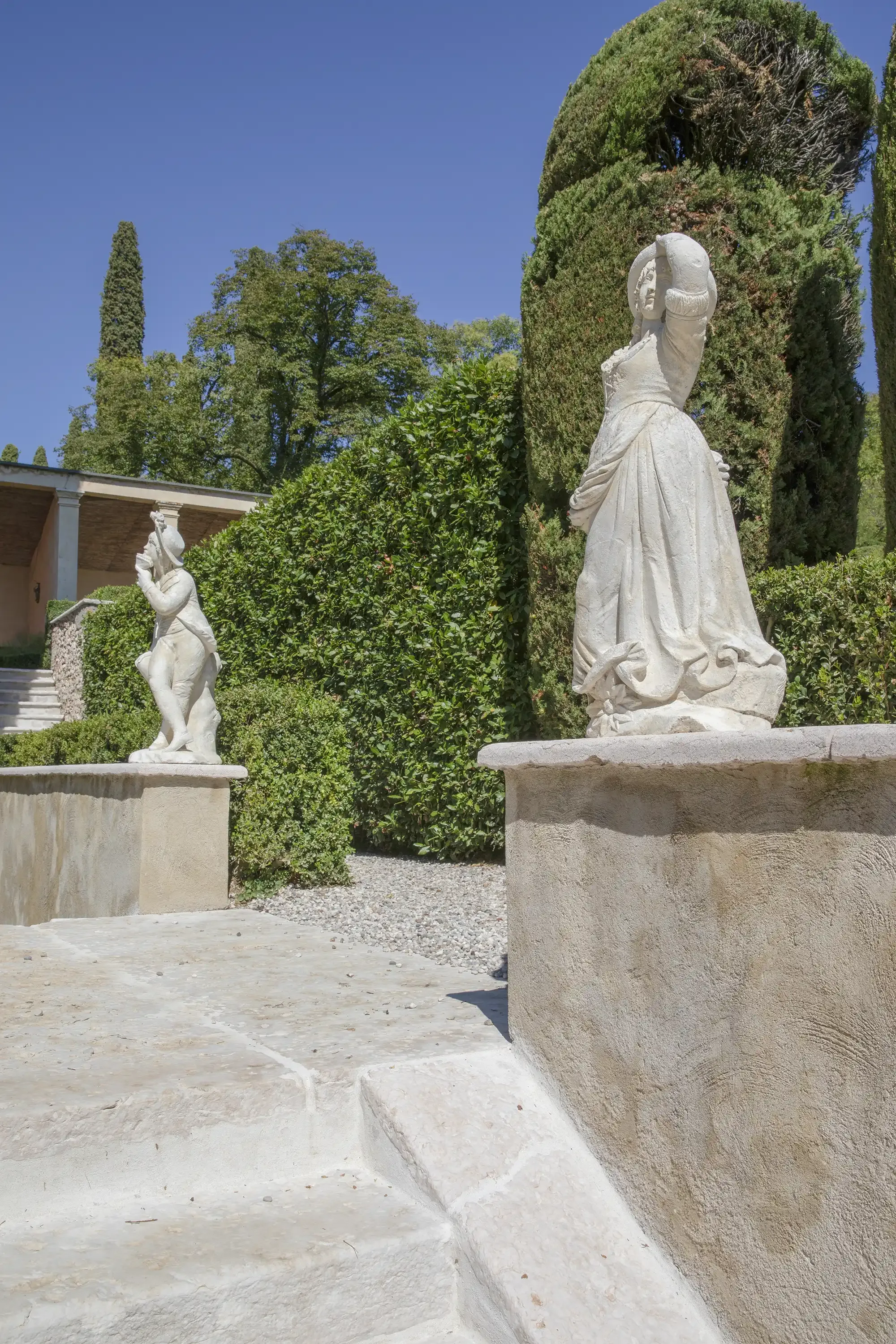
At the entrance to the stairway are two statues depicting a youth and a lady wearing period clothing, in contrast to all the other statues in the garden (dressed in classical clothes). The two youths seem carefree, and their hair is interwoven jokingly.


